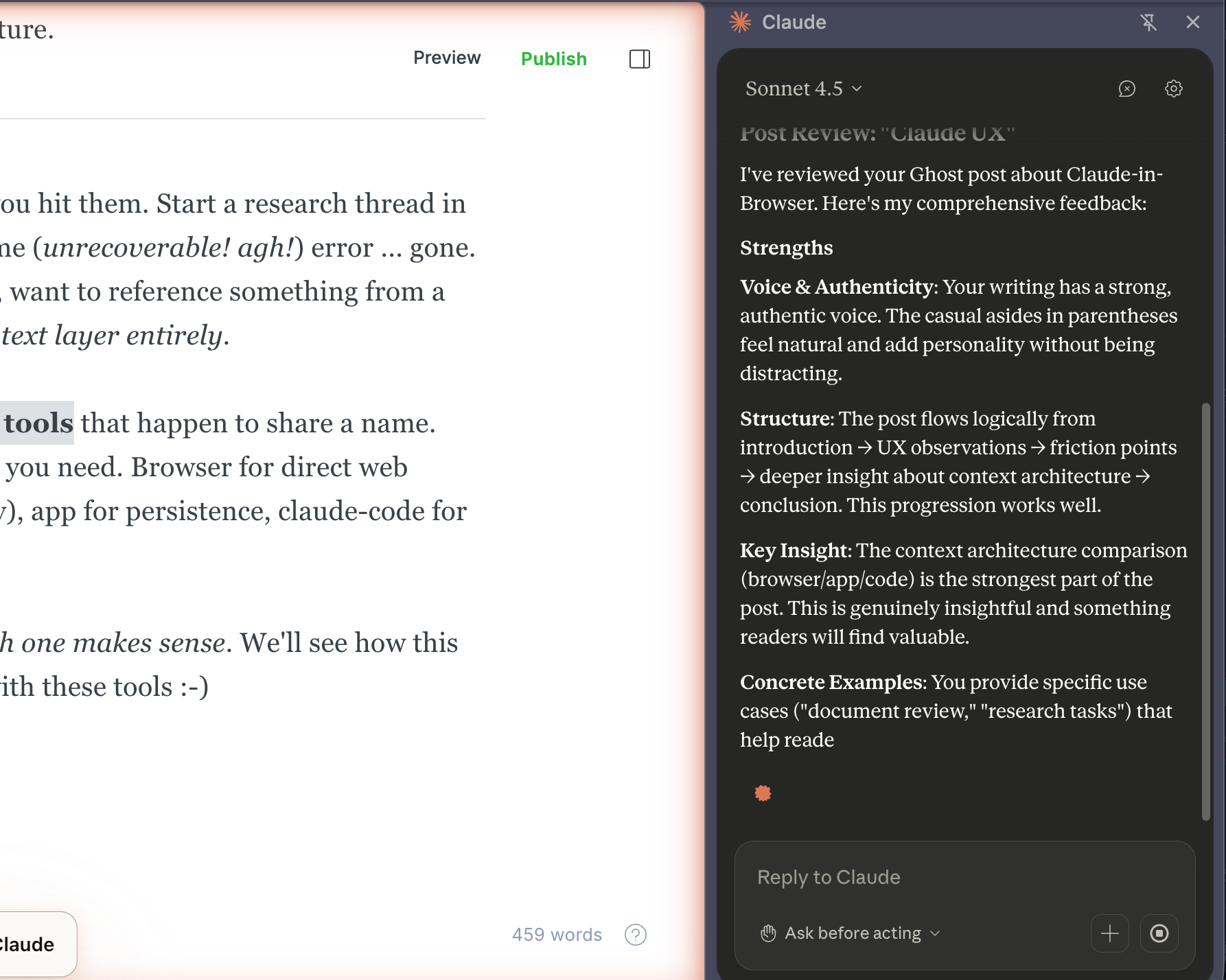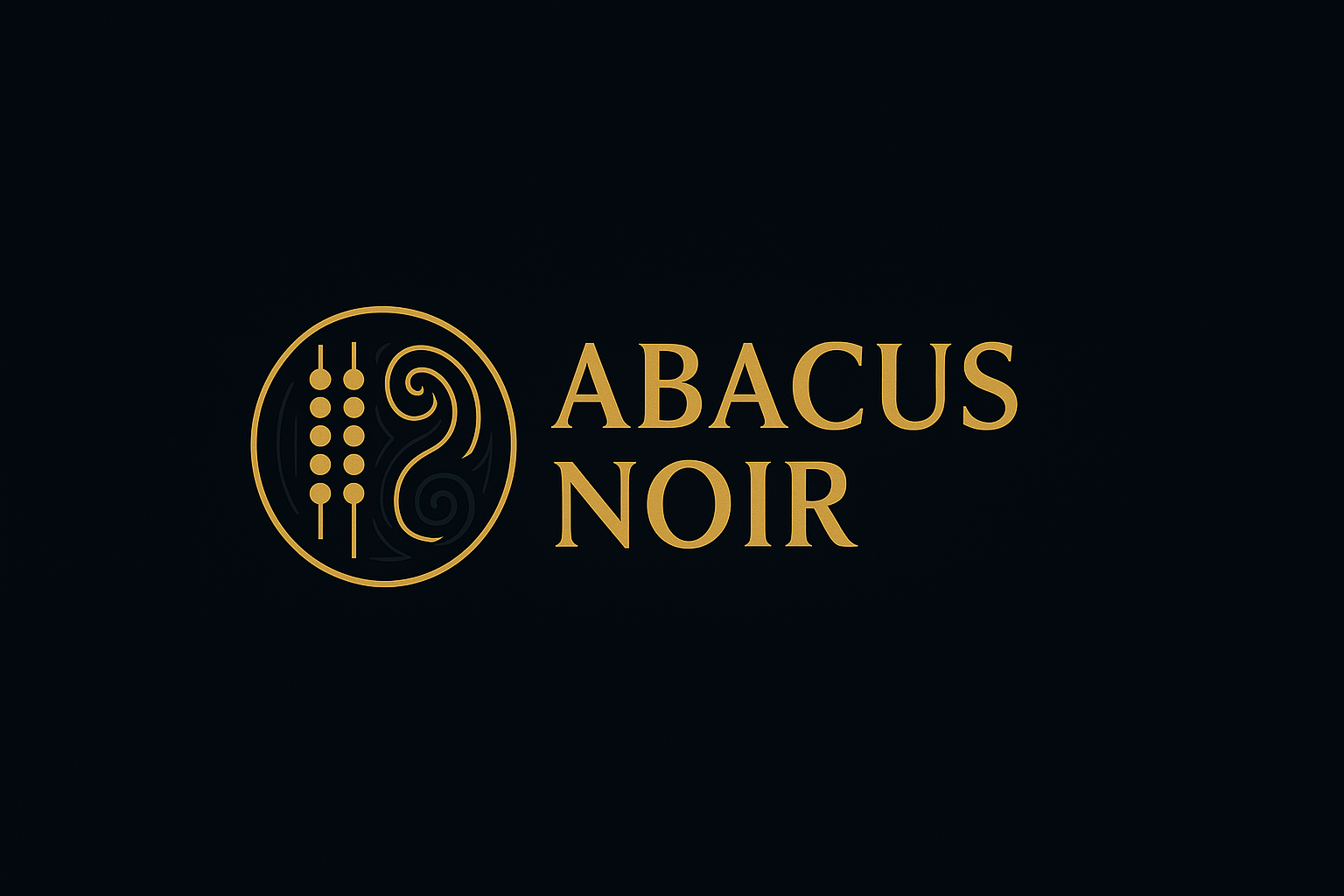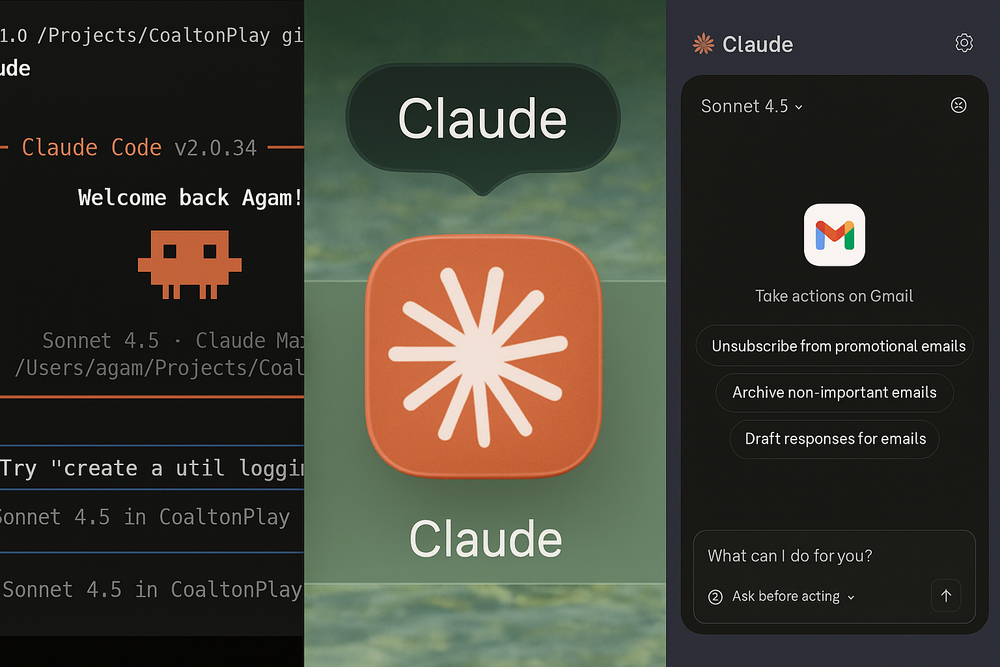Claude-in-Browser works better than I expected. The Chrome extension lets Claude interact directly with web pages, and I've been using it since it became available to all paying users. It's a research preview with a tastefully simple UX: click the extension, type what you want, watch it work.
The UX is tastefully simple
click the extension button, type what you want, let it churn. It reads pages, clicks through to follow links, analyzes content across multiple tabs. I've used it for document review (open a Google Doc, ask it to leave inline comments), research tasks (compare approaches across a few open tabs), and just general "figure out what's on this page and the three pages it links to" work.
The tab-group isolation is actually a win. I don't need the whole browser to be agentic: scoping it to specific tabs means I stay in control. This fits with Claude's explicit-first approach, which, as a power-user, I appreciate. Tell it what to do, watch it work, approve or adjust. No ambient intelligence trying to guess what I want.
The actual friction
Can't recover from errors well (yet). Something goes wrong mid-task, you're restarting the conversation. Also (this is an interesting difference from the app) the context is fully ephemeral. Close the tab or the extension, gone. No conversation history, no way to reference it later.
Three Context Architectures
The context boundaries are invisible until you hit them. I didn't fully appreciate this until I started using all three Claude modes:
claude-in-browser: Ephemeral. Context is whatever browser tabs you select. The trade-off for direct web integration is zero persistence. Scoped to tab groups you control.
The main app: Chats persist. Projects give you stable context. Conversational history builds up. This is where I iterate on writing, research threads, longer-term projects that need continuity.
claude-code: Session-based, tied to your machine. Context is the entire repo plus filesystem paths. Sessions can resume, but they're local. For development work where you need it to see the codebase structure.
The context boundaries are invisible until you hit them. Start a research thread in the browser, close the tab, or encounter some (unrecoverable! agh!) error ... gone. Or I'm working with the browser extension, want to reference something from a Project in the main app ... nope, wrong context layer entirely.
It does feel like three distinct tools that happen to share a name. You learn to match the mode to the context you need. Browser for direct web interaction (accepting the ephemerality), app for persistence, claude-code for repo access. The bleeding edge right now is figuring out when each one makes sense—developing the intuition for which context layer fits your task. It's messy, but that's how new tools evolve.
We'll see how this settles. I'm just happy to live in this time, with these tools :-)
Afterword
Here's an example of using claude-in-browser to assist with this post.

Note: I rejected its title in the end, kept my own ... self-editing still matters, avoiding that is obviously a terrible idea!

